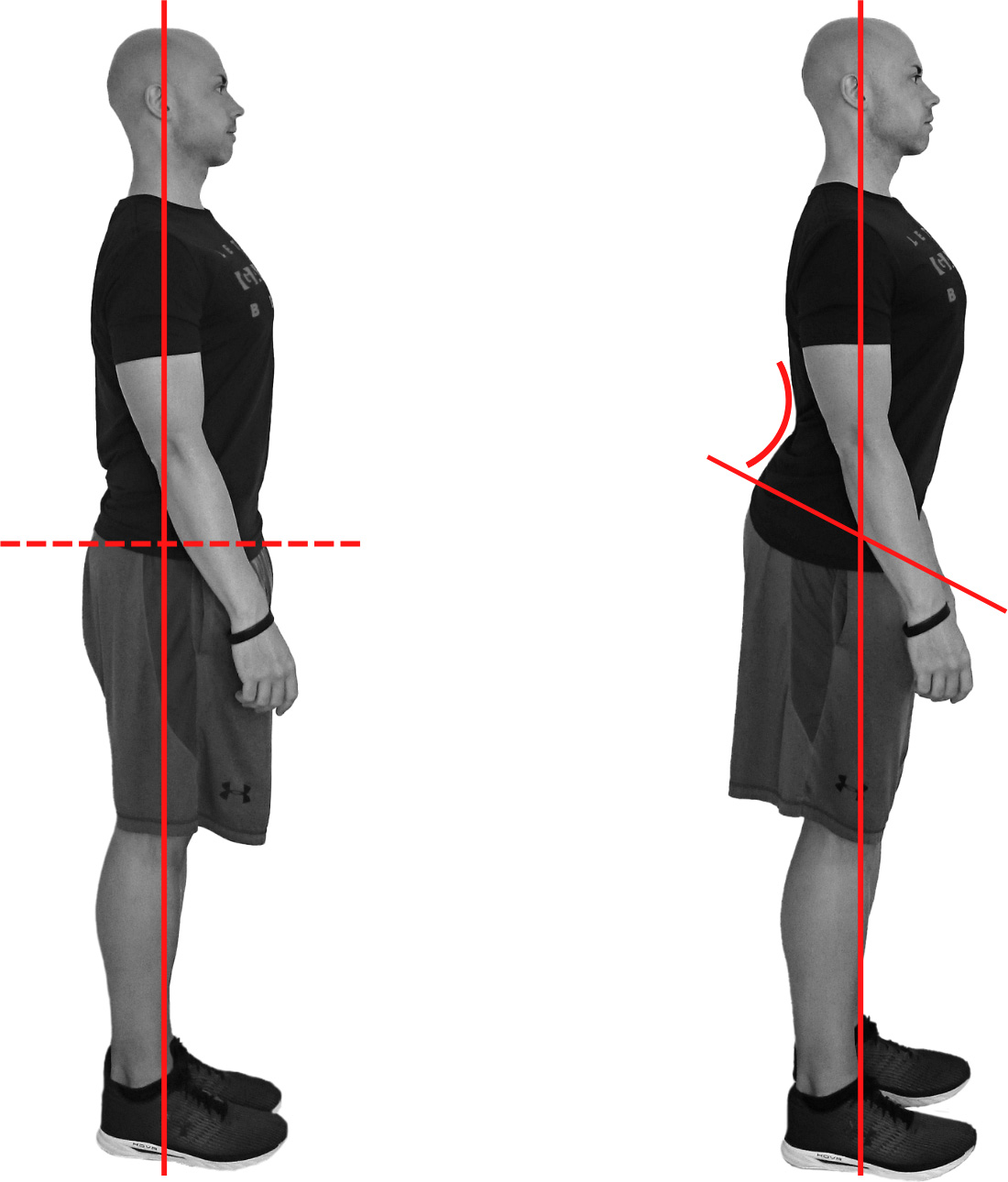Hollow back – Increased lumbar lordosis
To begin with: A hollow back describes the presence of a more than normal curved lumbar spine. A hollow back posture in the lumbar spine therefore corresponds to an increased lumbar lordosis or lumbar hyperlordosis. With its “normal” lordosis, the lumbar spine is an important part, especially since it is also in direct contact with the pelvis. The typical curvature in the lumbar spine helps resist compressive forces caused by gravity. A hollow back is generally referred to when the curve in the lower back is greater than normal (cf. figure). The abdomen is often arched forward. A hollow back can also affect the statics of the entire spine.

As mentioned above, a hollow back is called “hyperlordosis” (Greek “hyper” ≙ “over”, “more than”). It is often not just the lumbar vertebrae that are responsible for an increased lumbar lordosis. The following factors, for example, can play a role when the lumbar lordosis is increased:
- Lordosis angle
- Pelvic incidence
If you want to learn more about hyperlordosis and how the factors above might influence the spine biomechanics, then click on the following link (free and without any commitment) Hollow back - Increased lumbar lordosis.
You can find the literature in the corresponding original article on Fitness Simply Explained


